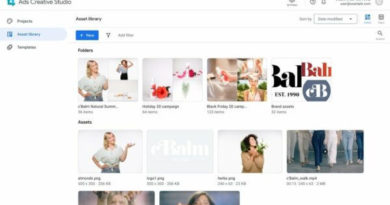Beware these 7 sneaky PPC attribution tricks
You may think you’re hitting your conversion goals, but columnist Andrew Goodman warns that faulty attribution can lead to inaccurate or misleading performance data.
PPC account managers are held to exacting performance standards. Their efforts are judged by KPIs like Return on Ad Spend (ROAS) and CPA (Cost Per Acquisition).
That sounds simple enough. But it’s a lot easier to set tough performance standards than to achieve them. As competition mounts, an account manager may decide to shorten their time horizon to four months instead of four years, figuring that keeping the gig is a lost cause. That leads to “Operation Obfuscate” — to fool the boss by the attributed conversion numbers, at least over the short term.
This column is about doing the opposite of that — or reversing the damage when Operation Obfuscate has sapped the strength of an account that used to have real customer acquisition power.
Businesses are always healthiest when they’re viewing their performance statistics with full transparency.
This process can get uncomfortable, especially when rooting out past malfeasance. But the path to prosperity generally starts with getting back to basics and weeding out all the attribution tricks. Here are seven ways PPC accounts can slowly lose their mojo via, shall we say, “relaxed” approaches to reporting conversion behavior.
1. Creeping brand credit
One’s own Brand bucket (not a product line, but rather, a navigational query that indicates a strong desire to return and purchase something in a premeditated way) can be a huge culprit in over-crediting a PPC manager’s efforts. By and large, we hope that these conversions come very cheaply.
Account managers can easily (or inadvertently) spread that credit throughout an account. If brand queries aren’t excluded from other campaigns, they may blend into said other campaigns, improving their numbers. Tighten it up!
2. Hyper audience bidding
RLSA audiences can be embedded within ordinary Search ad groups now; with Custom Combinations, or even behavioral parameters, they can be a marvel of sophistication. You can even use “similar audiences” to tap statistically similar groups of users.
Nearly all audiences of previous recent site visitors, converters and customer lists will convert better, but there’s a limit to how much you want to bid up on these audiences. You’re just altering your bid on the same search queries that you’re in the auction for anyway. Bid boost by 5, 10 or 35 percent? I have no problem with that. But I have seen completely irrelevant audiences (visited other product lines and so on) being boosted by 85 percent — a practice that is purely inflationary.
The most amazing example I’ve seen is audiences bid up as high as 898 percent with the help of a third-party bid tool. At some point in here, the thread has been lost. If impression share isn’t rising based on a boosted bid, don’t boost it further!
3. Spending, spending, and spending some more on GDN remarketing
Today, some account managers spend a staggering amount of their time creating an array of flavors of remarketing. Chop these campaigns up enough, and give them enough confusing names, and they may well fly under the radar. The campaign’s overall ROI slowly degrades, but the reported ROI isn’t so bad, because remarketing heavily pulls attribution credit away from channels outside the PPC campaign itself, especially in companies that have strong natural audiences from other advertising and/or a long history in business.
Recently, we found a large campaign spending 24 percent of its dollars just on this type of spend. In short order, we were able to bring that down to 9 percent by eliminating all the overlapping, confusingly named campaigns. Remarketing shouldn’t be confused with marketing, especially if you stop filling the top of the pipeline.
4. Double-counting
It’s not uncommon to duplicate conversion actions in Conversion Tracking setup. If you add many conversion actions and count them all, the platforms aren’t going to reach out and slap you. You’ll just see an improbable CPA number.
Make sure you’re comparing apples to apples over time, at least. The most idiot-proof way to do this in Google AdWords is to enable only one conversion type. A more leisurely assessment of other KPIs should take place in an Analytics platform like Google Analytics.
5. Fake or misleading attribution models
We’ve only just begun to see examples of attribution models being used that don’t refer to actual conversions but assign credit based on an estimate.
Even short of that, there’s a key distinction in conventional PPC practice between counting one conversion against a keyword, and multiple conversions if, say, that same user buys again (and again) within the conversion window. It can be useful to apply that revenue to calculations, but multiple conversion counting can be really confusing on smaller amounts of data. For my money, CPA is easiest to fathom when we only assign a single conversion to a user.
6. Fake conversions!
Long ago, some publishers in networks like GDN determined that they could get bots to fill out forms on the sites of lazy lead gen advertisers without CAPTCHAs. (Guess what, though. CAPTCHA or no CAPTCHA, some publishers employed humans to fill out the forms, just to keep their “conversion” numbers high enough to avoid being tossed from the network.)
Lead gen businesses have to be keenly aware of lead quality. If a source — such as super-cheap clicks from generic display ads — seems too good to be true, it probably is. Ideally, all lead sources track right through to revenue via some kind of CRM integration. Failing that, though, just look at the quality of the forms that are coming in. If you sell a $20,000 enterprise software package starting with a free demo, you’d be surprised at how easy it is to sniff out the low-quality leads.
7. Campaign duplication
This isn’t strictly an attribution issue, but it’s part of the same phenomenon. Ever waded through a large account and seen a few marginally performing campaigns, not quite sure of their intended purpose? When I’m not familiar with a campaign’s purpose, and its performance is somewhere near the bottom end of the average for the other campaigns, I assume it’s a sensible attempt to slip a bit on the marginal cost curve to pursue more growth.
Companies are often worried about shutting off these sophisticated-sounding campaigns because they might kill something that was set up as an incremental growth driver. Thing is, I’ve looked harder at some of these exotic animals. Sometimes, it comes to light that they’re all variants of the exact same thing (e.g., three different Dynamic Search Ads campaigns with distinct-sounding names), inefficiently pulling impressions across two or three campaigns, haphazardly, to say nothing of cannibalizing other parts of the account. Consolidating down to a single version of same ultimately leads to clarity of purpose and improved ROI with no loss of sales.
Final thoughts
Given the complexity of how impressions are served in a large account, it can be scary to undertake a cleanup operation. You have to be quite confident that apparent drivers of new customer growth are in fact illusory. If you can skillfully reallocate budget to growth drivers, the “attribution hog” parts of the account will resume their growth as well. This is best done gradually, but for long-term success, it’s a must.



